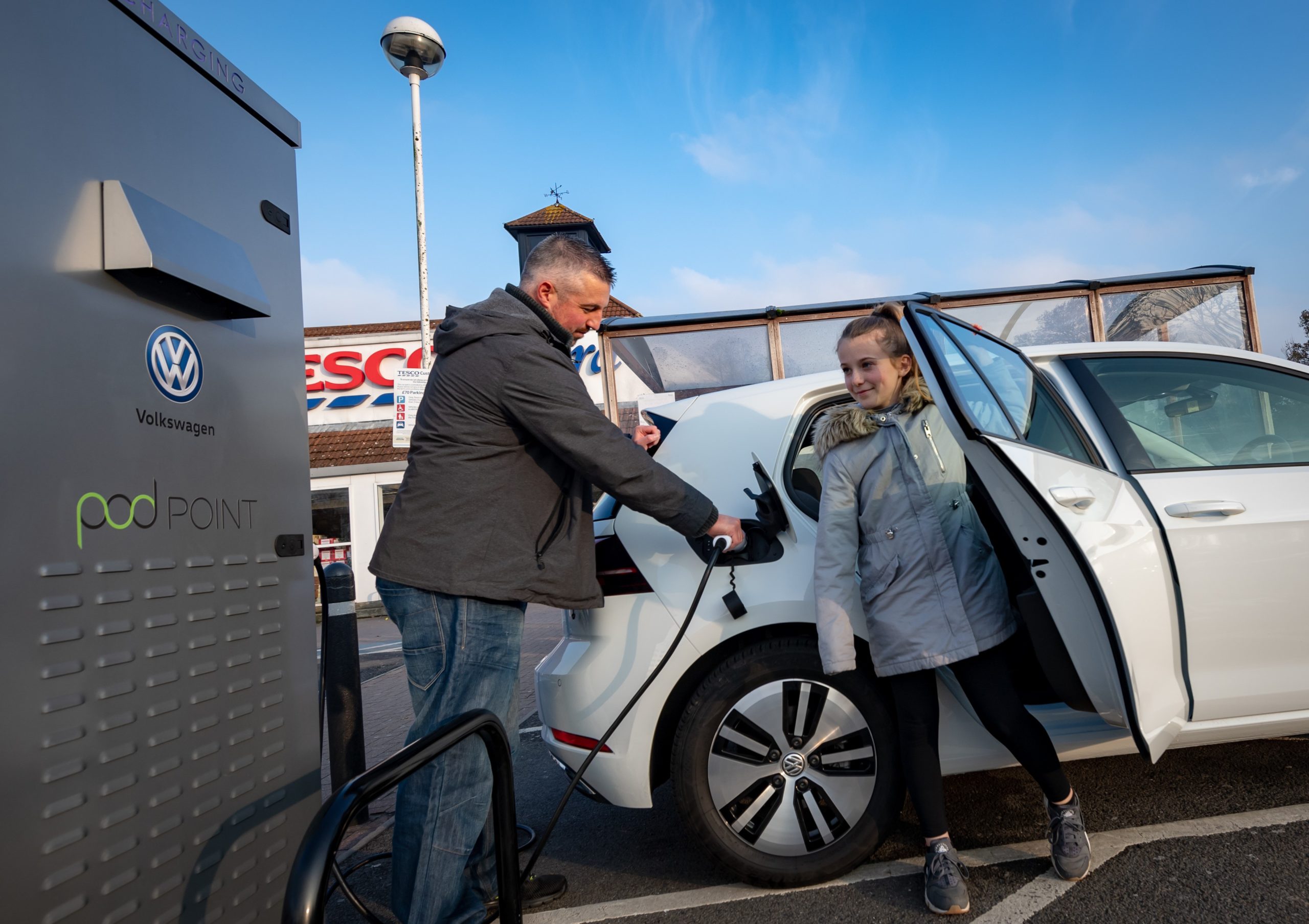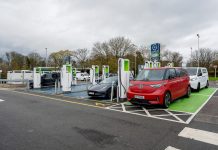Almost 1,000 new EV charge points have been added at supermarkets in the last 21 months, according to data analysed by Zap-Map and the RAC.
The figures mean that nearly 8% of all the UK’s 26,000 publicly accessible charge points are located at supermarkets – up from 6.5% in early 2020.
This takes the total number of EV charger units on their sites to 2,059, up 85% from 1,112 in January 2020.
In total, the number of stores now offering charging facilities for battery-electric and plug-in hybrid vehicles has also more than doubled from 607 in early 2020 to 1,300 in 2021.
Tesco has added more EV chargers than any other supermarket by installing 641 devices, giving it a total of 922 across its 4,008 stores – 676 more than its nearest EV charging rival Asda which has 246 chargers.
This means the supermarket giant now has charging facilities at 514 of its sites – 372 more than at the start of last year.
However, due to the size of its portfolio it means only 13% of its stores have the capability to charge an EV.
Morrisons installed chargers at 112 stores over the 21 months studied by Zap-Map and the RAC giving it a total of 201 sites with EV facilities– and means 40% of its estate now offers EV charging, the greatest proportion of any supermarket.
Meanwhile, Lidl has chargers at a quarter (24%) of its stores after adding EV facilities at 141 locations to give it 203 sites in total.
The data shows few supermarkets other than Tesco, Morrisons, Asda and Lidl have, to date, decided to invest heavily in EV chargers for their customers.
Melanie Shufflebotham, co-founder of Zap-Map, said, “As we move towards 2030, it will be important for supermarkets not only to accelerate this roll-out but also to ensure that the consumer experience is as good as possible by providing ‘open-access’ and simple payment options.”




